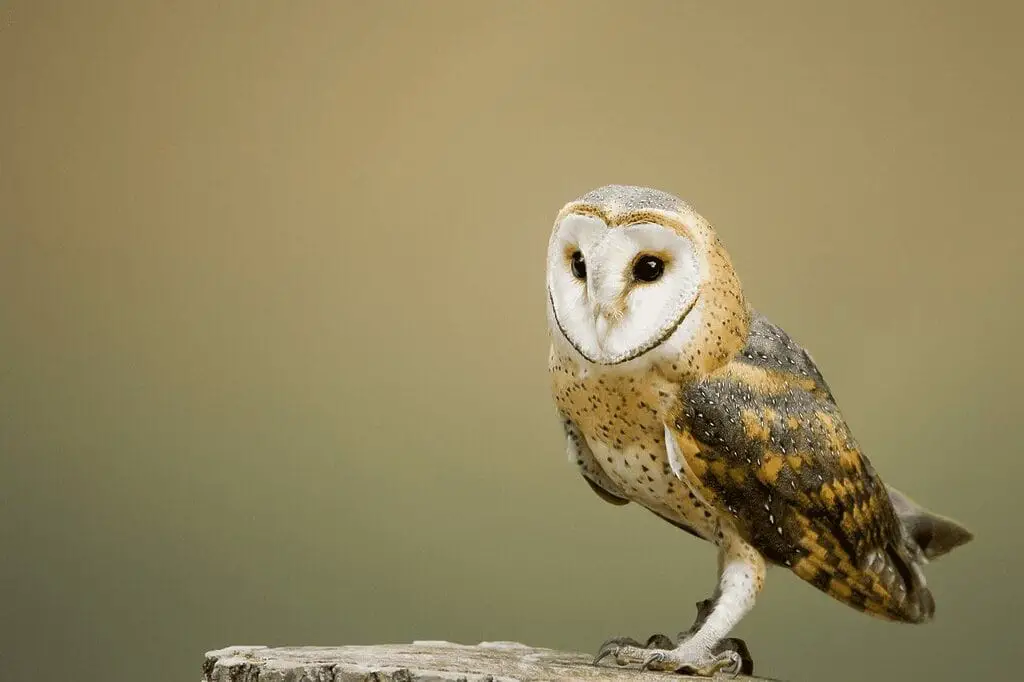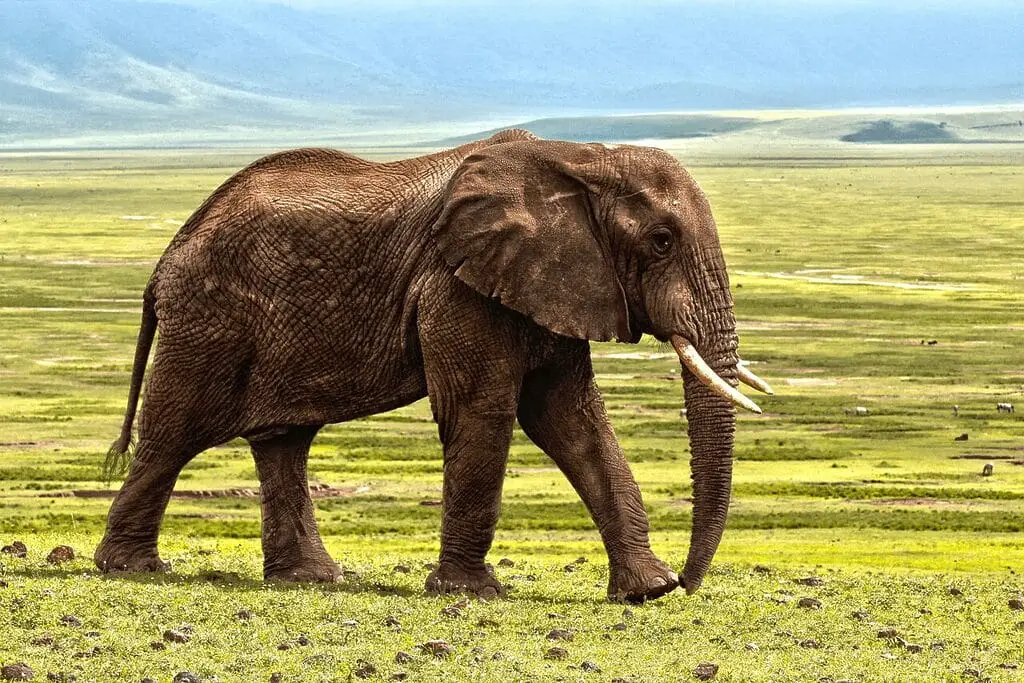Big eyes in the animal kingdom captivate human fascination, triggering a primal response rooted in empathy and emotional connection. Universally appealing, creatures with large, expressive eyes evoke a sense of vulnerability, innocence, and curiosity. This visual trait is often associated with cuteness and triggers a nurturing instinct, fostering a bond between humans and these animals.
From wide-eyed primates to endearing domestic pets, the allure of big eyes transcends species, sparking a deep-seated appreciation for the profound emotional connections forged through the gaze of these captivating creatures.
The Top 7 Animals with Big Eyes

The Owl’s Wise Stare
The captivating eyes of various owl species are masterpieces of adaptation. With large, forward-facing eyes, these nocturnal hunters possess remarkable vision that aids their predatory prowess. The expansive eyes enhance light absorption, allowing owls to navigate in low-light conditions.
Adapted for optimal night vision, their eyes are larger than those of diurnal birds, facilitating efficient light capture. Specialized adaptations include tubular structures that increase light sensitivity. This unique ocular anatomy not only enables silent, precise night hunting but also contributes to the mysterious allure of owls, captivating observers with the intensity and wisdom reflected in their deep, mesmerizing gaze.
The Lemur’s Soulful Gaze
Lemurs, the enchanting primates of Madagascar, are distinguished by their soulful eyes that radiate emotion. Beyond their striking appearance, these expressive eyes play a crucial role in lemur communication and social dynamics. Serving as windows to their emotions, the eyes convey signals of fear, curiosity, and bonding.
The white ring-tailed lemurs, for instance, use eye contact to strengthen social bonds and establish hierarchy within their groups. The intensity of their gaze reflects the intricate web of social connections, making these captivating eyes essential conduits for understanding the rich emotional tapestry woven into lemur societies.
Enigmatic Tarsiers and Their Enormous Eyes
Tarsiers, the diminutive primates of Southeast Asia, captivate with their disproportionately large eyes, which constitute nearly half their head size. Adapted for nocturnal life, these immense eyes grant tarsiers exceptional night vision, essential for their nocturnal hunting. The retina is uniquely structured to maximize light absorption, enhancing sensitivity in low-light conditions.
Their ability to rotate their heads 180 degrees aids in pinpointing prey sounds, contributing to their stealthy nocturnal predation. The disproportionately large eyes of tarsiers stand as a marvel of evolutionary design, allowing these tiny primates to navigate the darkness with unparalleled precision and succeed as elusive, efficient hunters in the shadows.
The Adorable Big-Eyed Tarsier
The tarsier, a small primate native to Southeast Asia, enchants with its endearing feature—its large, expressive eyes. These eyes, each equivalent to its brain’s size, are finely tuned for a nocturnal existence. Adapted to the dimly lit forests they inhabit, tarsiers possess exceptional night vision.
The oversized eyes aid in precise depth perception and spotting prey in the cover of darkness. Coupled with their ability to rotate their heads nearly 180 degrees, these unique adaptations contribute to the tarsier’s prowess as a stealthy nocturnal hunter, emphasizing the charm and evolutionary brilliance encapsulated in their captivating, luminescent gaze.
Deep-Sea Dwellers: The Giant Squid
The mysterious realm of giant squids, dwelling thousands of feet beneath the ocean’s surface, is illuminated by their awe-inspiring adaptations. These elusive creatures, with eyes the size of basketballs, navigate the deep, dark abyss with unparalleled vision. The enormity of their eyes allows giant squids to detect bioluminescent flashes from potential prey and predators in the light-starved depths.
Evolved for the profound darkness, these colossal eyes are equipped with a sophisticated lens and an abundance of light-sensitive cells, unveiling the profound mystery of how giant squids conquer the deep, where sunlight scarcely penetrates, and where their massive eyes become beacons in the ocean’s perpetual night.
The Majestic Chameleon’s Eye Rotation

Chameleons, with their mesmerizing color-changing abilities, also boast a remarkable ocular adaptation—the ability to move their eyes independently. Each eye can pivot and focus in different directions, granting them a panoramic field of view. This exceptional eye mobility enhances their hunting prowess, enabling precise depth perception and target tracking.
As ambushing predators, chameleons rely on this unique eye movement to assess their surroundings, ensuring heightened situational awareness. The evolutionary marvel of independent eye movement not only aids in tracking prey but also contributes to their survival by vigilantly scanning for potential threats in the diverse environments they inhabit.
The Gentle Giant: The Elephant

Elephants, renowned for their majestic presence, are adorned with large, soulful eyes that reflect a profound depth of emotion. These expressive orbs convey the remarkable emotional intelligence of these mammals. The intensity of an elephant’s gaze serves as a powerful form of communication, expressing joy, sorrow, and bonding within their social groups.
Their eyes, capable of conveying empathy and understanding, play a pivotal role in intricate non-verbal exchanges. Through the language of their soulful eyes, elephants forge deep connections, illustrating the emotional richness of these gentle giants and the complexity of their social and familial relationships.
The Curious Case of the Bush Baby
Bush babies, small primates native to Africa and Asia, enchant with their large, expressive eyes. These remarkable eyes are finely tuned for their nocturnal lifestyle, allowing them to navigate the darkness adeptly. Adapted to low-light conditions, their oversized eyes enhance light absorption, aiding in precise movement and hunting at night.
The expressive gaze of bush babies also plays a vital role in communication within their social groups. In the moonlit realms they inhabit, these luminous eyes become beacons of survival, underscoring the evolutionary significance of their nocturnal adaptations in the intricate tapestry of the animal kingdom.
- What Should I Do If A Koala Bites Me? Safety Guide - 2024-05-30
- Are Kangaroos Born Without Hind Legs? A Fascinating Journey - 2024-05-30
- Animals That Look Like Squirrels - 2024-05-30








